The Golden Eye, released in 1948 and directed by William Beaudine, occupies an intriguing niche for anyone interested in detective cinema and the ways mid‑century American genre films intersect with darker crime narratives. Presented by Monogram Pictures and starring Roland Winters as Charlie Chan, The Golden Eye mines familiar elements of mystery, impersonation, and criminal enterprise. While it is not a conventional film noir movie in the strict stylistic sense, this entry in the long‑running Charlie Chan series borrows motifs and atmospheres that film noir movie aficionados will recognize: shadowed tunnels, moral ambiguity, and a contraband scheme that links the desert to the border. This article offers a comprehensive critical appraisal—plot summary, close reading of themes and performances, scene highlights with visual cues, and a considered evaluation of the film’s place within late‑1940s American genre filmmaking.
Outline
- Introduction and production context
- Detailed plot narrative
- Principal characters and performances
- Visual and thematic motifs: why noir sensibilities surface
- Key set pieces and moments (annotated with timestamps)
- How The Golden Eye fits in the Charlie Chan cycle and studio practice
- Strengths, weaknesses, and legacy
- Conclusion and recommendation for modern viewers
Introduction and Production Context
The Golden Eye is an American feature produced and distributed by Monogram Pictures, directed by William Beaudine. The film runs approximately 69 minutes and was released in late August of 1948. Roland Winters plays Charlie Chan, in what is one of his multiple returns as the famed detective. The screenplay credits Scott Darling with original scripting duties and attributes the Charlie Chan characters to Earl Derr Biggers. Cinematography is by William A. Sickner and the music is by Edward J. Kay—industry craftsmen accustomed to economical, efficient studio production. The film is now in the public domain, a fact that has affected its circulation and preservation.
Monogram Pictures was known for low‑budget genre pictures in the 1930s and 1940s. The Golden Eye was produced within that industrial framework: short shooting schedule, recycled sets and stock character types, and a reliance on the audience’s familiarity with the Charlie Chan franchise. For viewers attuned to period practice, The Golden Eye is revealing: it shows how a studio like Monogram could blend the enduring appeal of a series detective with topical criminal concerns. The plot’s smuggling angle and the desert mine setting lend the film a mild, genre‑crossing darkness that invites comparisons to a film noir movie sensibility, even as the film hardly conforms to noir’s full stylistic program.
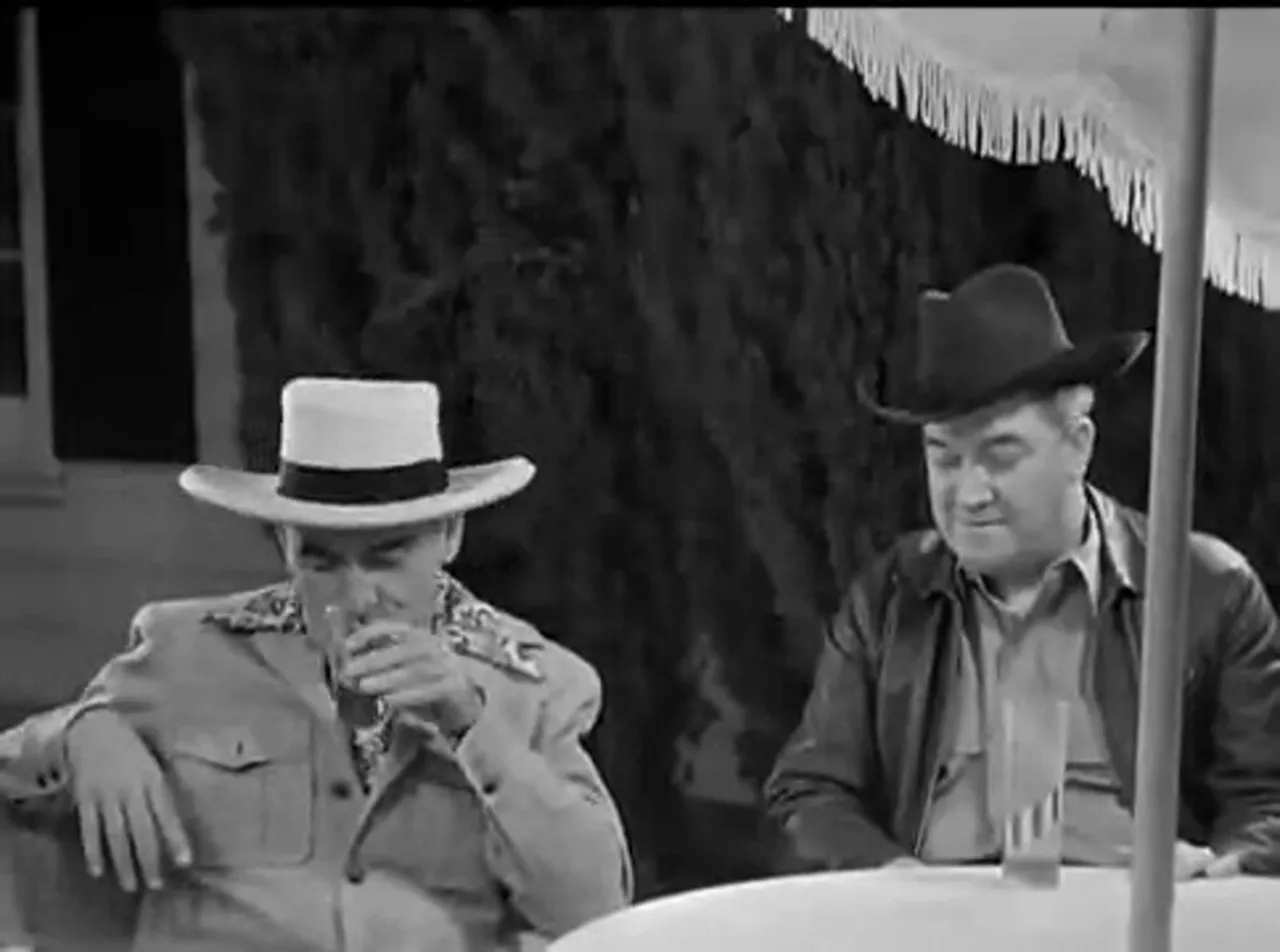
Plot Narrative: A Close, Scene‑By‑Scene Reading
The Golden Eye opens with an urgent personal appeal: Evelyn Manning arrives in San Francisco seeking Charlie Chan’s help because her father, owner of the Golden Eye Mine in Arizona, has been targeted by mysterious and violent incidents. Evoking the private client motive common to detective fiction, the opening establishes stakes quickly—attempted murder, falling down a mine shaft, and an escalating series of accidents—all of which demand Chan’s methodical attention.
Chan does not travel in an overtly conspicuous manner. To avoid alerting hostile parties, the detective registers at a nearby dude ranch as a guest with his number two son, Tommy, and the chauffeur Birmingham Brown. This decision places Chan within the social orbit of the ranch and the mine, providing plausible access and a cover story. The ranch environment also permits moments of comic relief and character‑work that stand apart from the darker threads of the narrative.
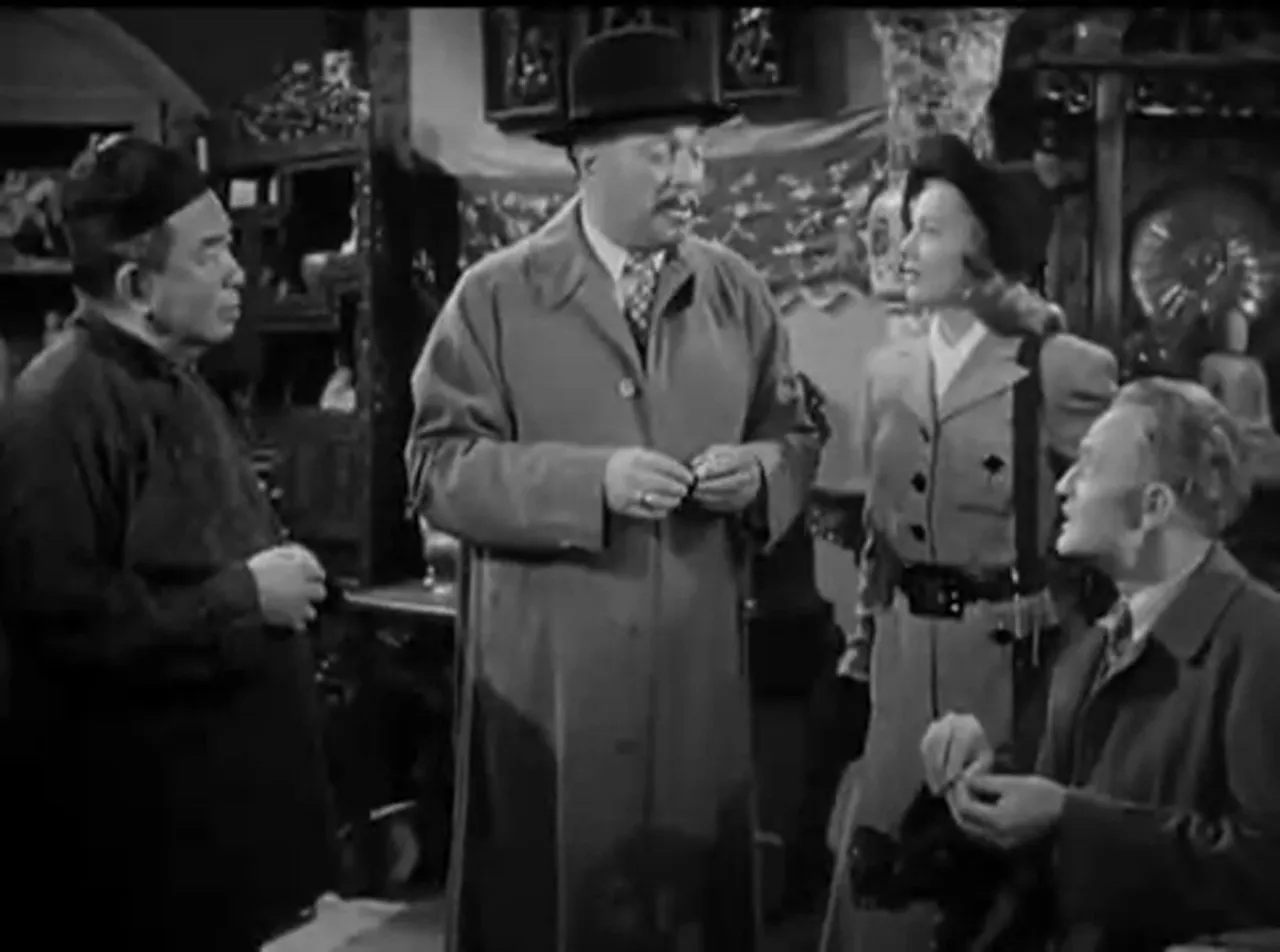
At the ranch, the narrative intersects with Lt. Mike Ruark of the San Francisco Police, who conceals his identity and poses as a drunken guest known as "Vincent O'Brien." Ruark’s undercover performance is in keeping with the film’s recurring motif of disguise and impersonation. When Chan visits the Manning household, he finds Mr. Manning comatose—supposedly the result of a forty‑foot fall into a mine shaft. From here the plot accelerates into a series of subterranean investigations and border patrol revelations.
Chan’s enquiries reveal a darker logistical scheme: the Golden Eye Mine appears to have suddenly become wealthy after years of poor returns. Gold shipments have begun circulating into San Francisco without any publicized new vein or formal discovery. Suspicion grows that an elaborate smuggling operation is at play: lower‑value Mexican gold is being introduced, laundered through the mine’s books, and sold at U.S. prices. The operation’s profitability explains both the theft of ore and the attempts to eliminate the mine owner—someone close to the truth becomes a threat.
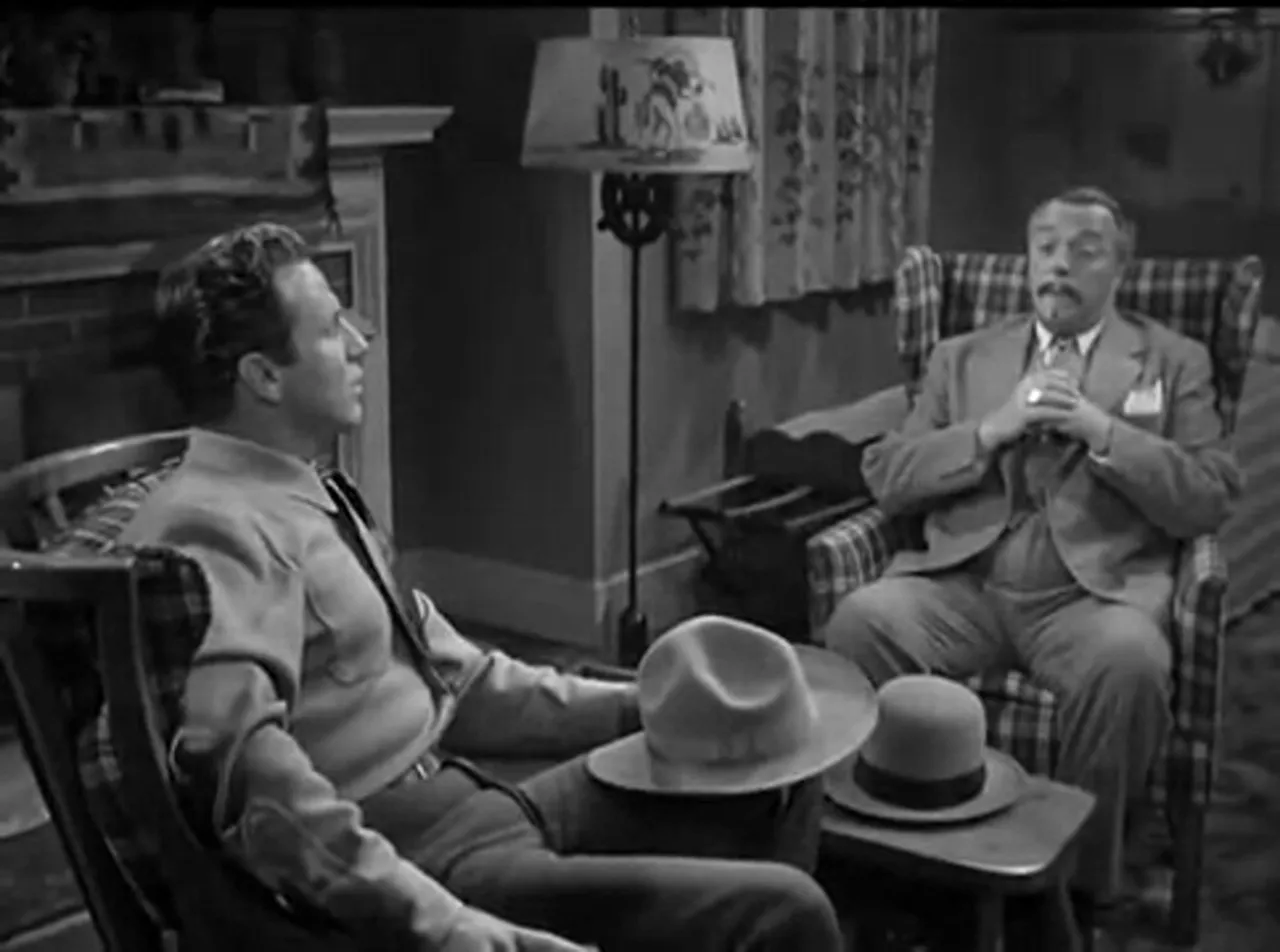
Chan’s investigation takes him down the archetypal filmic subterranean path. He persuades an old prospector, Pete, to guide him through a secret passage into the mine. Instead of a guided tour, Tommy and Birmingham encounter Pete’s body; an apparent murder and a carefully staged discovery. From this apex of danger, the plot reveals alternate suspects and red herrings, among them Jim Driscoll, the mine superintendent, and Talbot Bartlett, the assayer. Medical impostures, including a suspicious nursing sister, also surface; their presence suggests a coordinated effort to manipulate perceptions and protect smuggling channels.
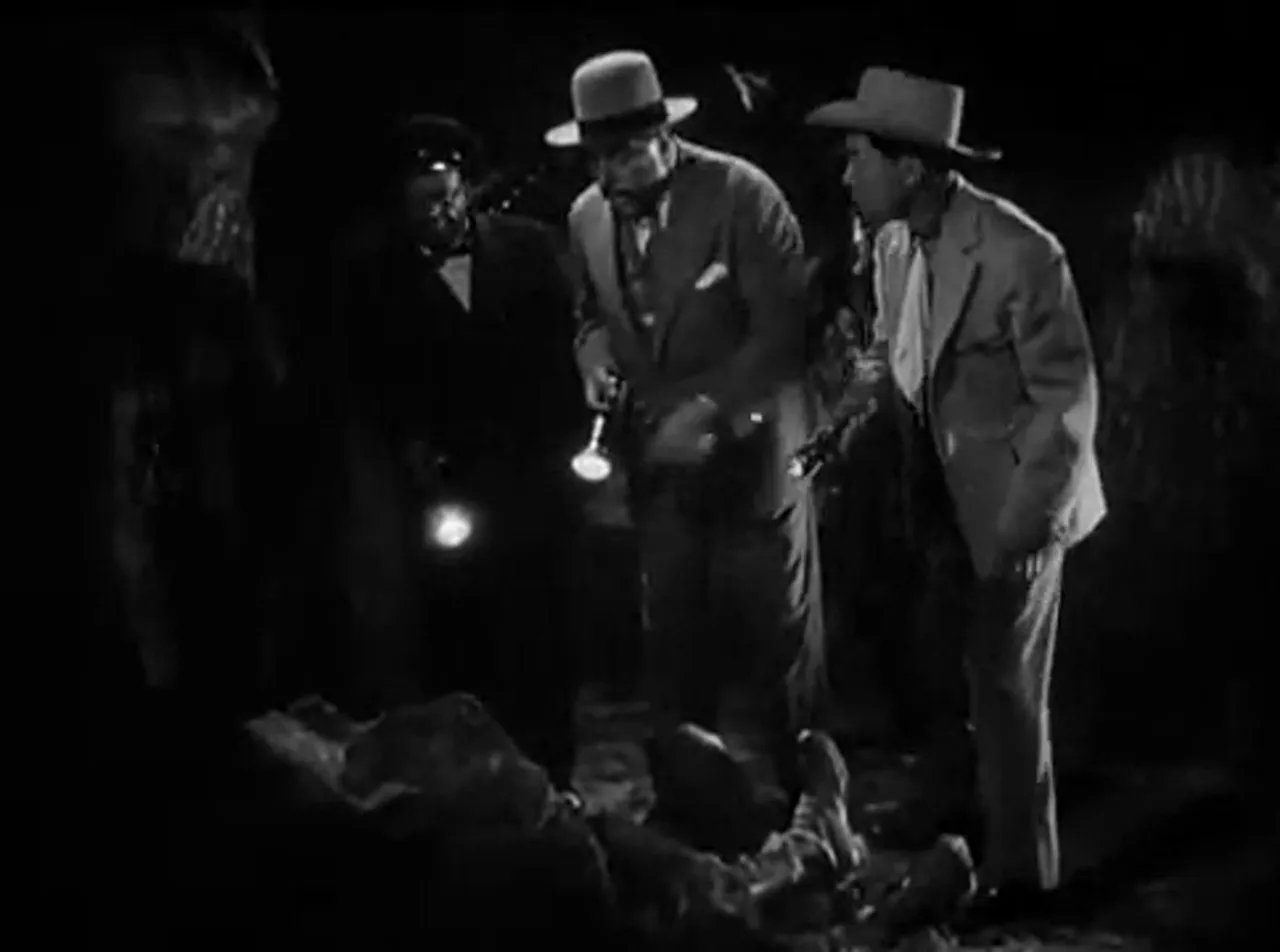
As the story resolves, Chan pieces together the criminal infrastructure. The smuggling involves moving Mexican gold into the U.S., marking it as Golden Eye product, and profiting on the price differential. The narrative culminates in confrontations that expose the dual nature of guilt: several parties participate in illegal acts, but the film ultimately identifies a primary perpetrator whose motives combine finance and personal ambition. A climactic sequence of arrests, cross‑border cooperation, and an exposed getaway attempt produces the final reveal.
Principal Characters and Performances
The Golden Eye’s cast adheres to functional archetypes, and cast choices serve the story’s economy. Roland Winters returns as Charlie Chan, a figure whose genial, aphoristic manner conceals a sharp deductive mind. Winters’ Chan is the steady center, less ostentatious than some earlier portrayals and adapted to Monogram’s brisk narrative pace. Victor Sen Yung appears as Tommy Chan, Chan’s energetic number two son, whose comic timing and impulsive bravado create counterpoint to his father’s measured calm. Mantan Moreland’s Birmingham Brown provides comic relief, rhythmically punctuating tense moments with exclamations and panicked energy.
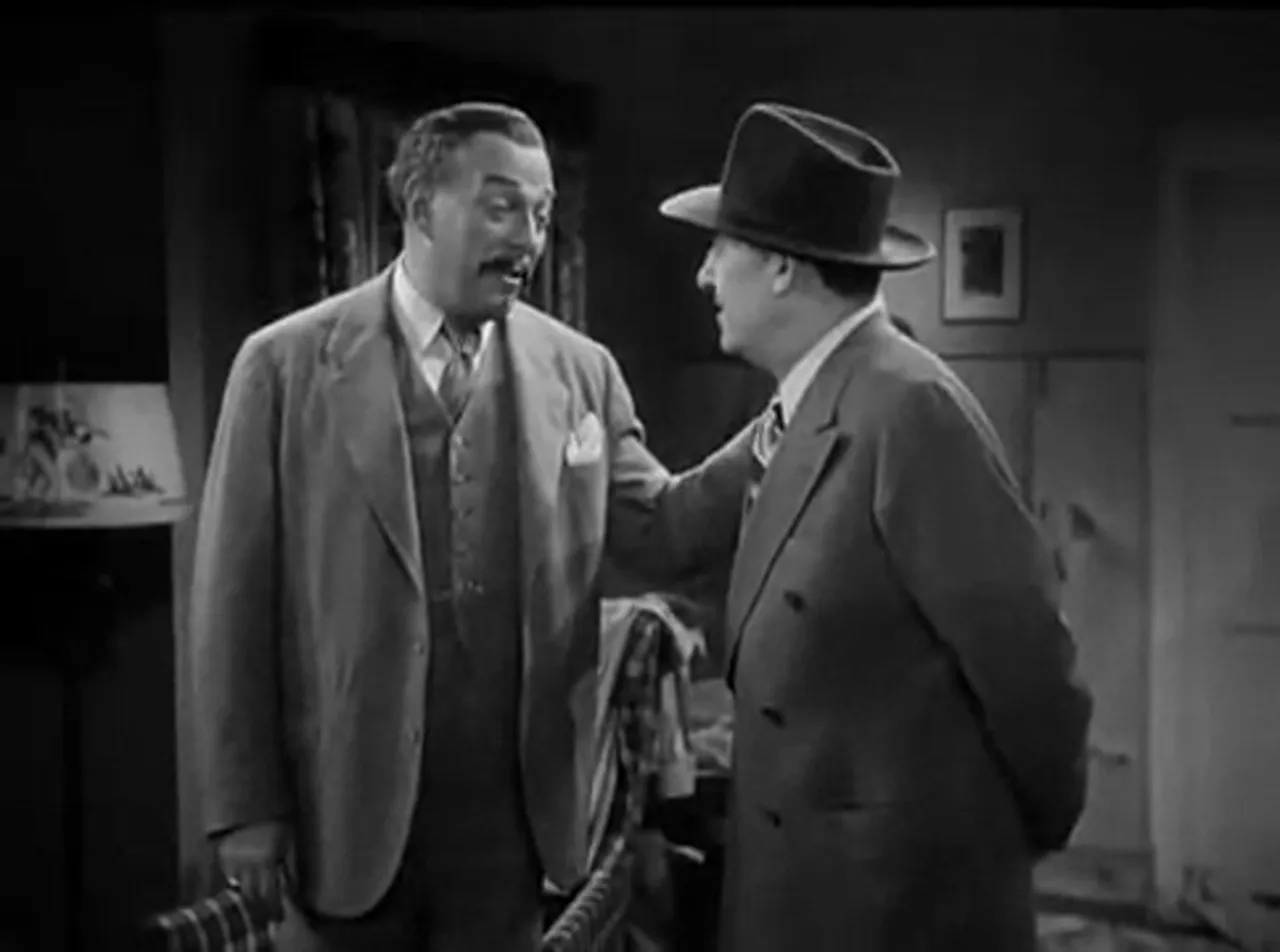
Wanda McKay plays Evelyn Manning, the worried daughter whose social standing and emotional vulnerability are central motivating forces. Bruce Kellogg appears as Talbot Bartlett, the assayer, whose good manners and speculative interest in the mine mark him as possible ally or risk. Ralph Dunn’s Jim Driscoll, the mine superintendent, functions as the film’s most obvious suspect: trapezoidal trust paired with opaque motives. The supporting cast includes Lee 'Lasses' White as the prospector Pete and Evelyn Brent as Sister Theresa, a nurse whose equivocal behavior raises suspicion.
Performances in The Golden Eye often emphasize clear character markers and rapid scene economy—an understandable approach given runtime constraints. The pacing requires actors to communicate motive quickly: suspicion, loyalty, greed, or fear must be legible in a handful of lines. For a viewer accustomed to studio era casting habits, these performances are efficient and emblematic of Monogram studio practice, even as they occasionally flatten complexity for narrative expedience.
Visual and Thematic Motifs: Noir Echoes in a Detective Series Film
When critics classify The Golden Eye as touching on film noir movie territory, they are primarily responding to the film’s noirish thematic DNA rather than its visual extremities. Film noir movie conventions commonly include urban corruption, moral relativism, claustrophobic interiors, night‑driven photography, and characters whose motives are compromised by greed or desire. While The Golden Eye diverges from noir’s hallmark chiaroscuro style—owing in part to budget and the franchise’s lighter beats—it nonetheless shares noir’s preoccupation with criminal networks and ethical murk.
Consider the mine sequences: confined, labyrinthine galleries become stand‑ins for noir’s maze‑like urban alleys. The film’s smuggling operation—an economic crime crossing national borders—introduces a systemic, institutional corruption that goes beyond the individual antagonist. The character who appears as a trusted subordinate (the superintendent) becomes a locus of suspicion; such twistings of trust are familiar from film noir movie narratives, where betrayal often masquerades as propriety.
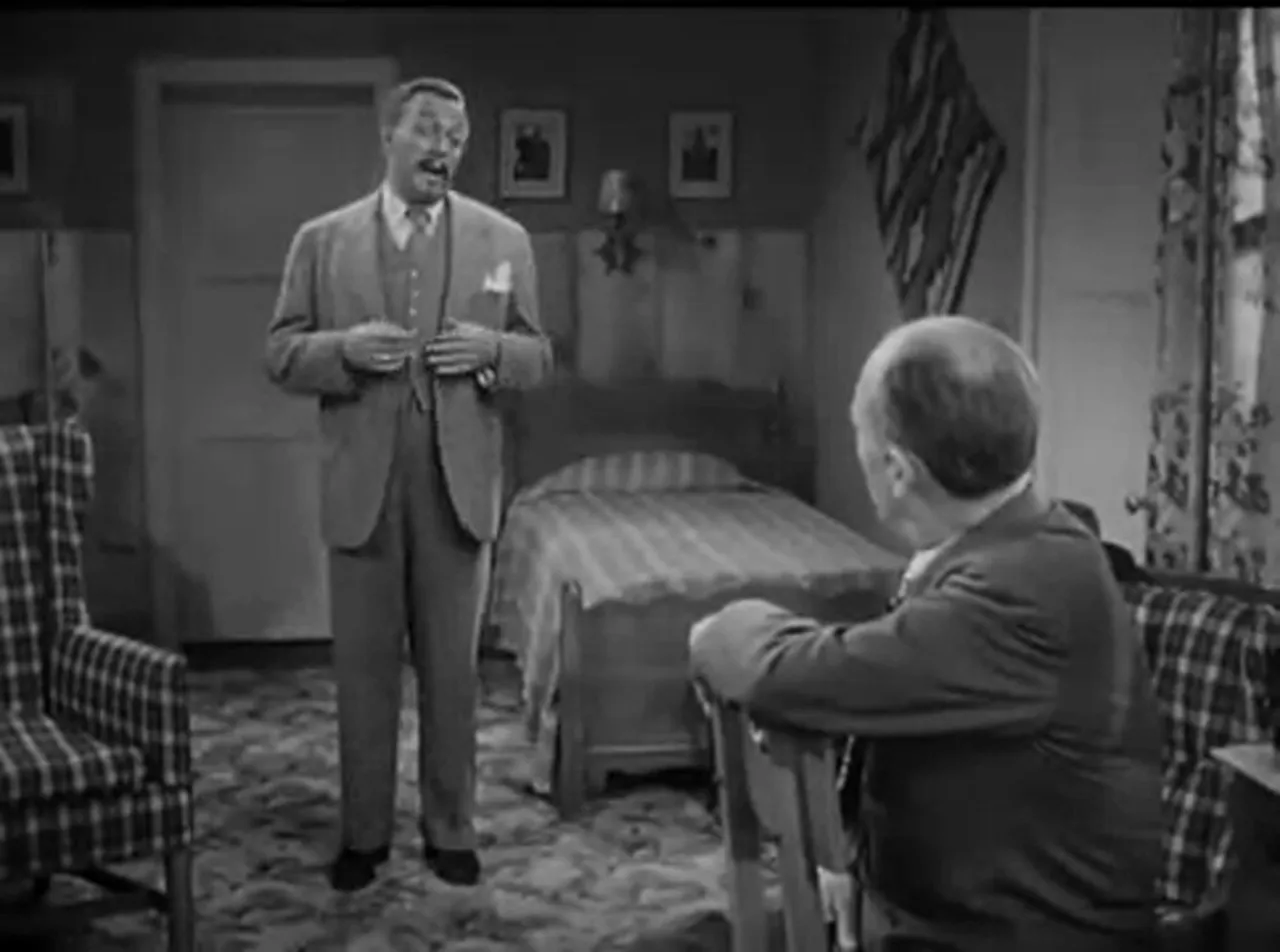
Another noir echo resides in the film’s use of impersonation and false identity—an undercover lieutenant posing as a drunken guest, a fake nursing sister, and staged accidents. This layering of deception contributes to a mood of pervasive unease: the social world cannot be trusted to furnish straightforward truth. The Golden Eye’s use of disguise and the infiltration of respectable domestic spaces by criminal enterprise recall film noir movie tropes in which appearances routinely mislead.
Nonetheless, it is important to be precise: The Golden Eye does not fully embrace the visual or philosophical extremity that defines canonical film noir movies. The detective’s aphorisms, the injection of comic relief, and the episodic, puzzle‑driven plotting preserve a classical detective narrative. The film combines the familiar comforts of series storytelling with touches of darker material; for that reason, scholars and viewers may prefer to describe The Golden Eye as a detective series film with noir‑adjacent qualities rather than as a pure film noir movie.
Key Set Pieces and Moments (with Visual Pointers)
Below are several notable scenes that crystallize the film’s dramatic architecture. Each is annotated with a timestamp to assist close visual reference.
1. The Urgent Appeal and Chinatown Exchange (Timestamp 03:01)
The opening exchange establishes the threat. Evelyn Manning’s plea—delivered in a polite but urgent tenor—sets the private motive for the investigation. The sequence also introduces the film’s recurring urban/ethnic contrast: high desert wealth colliding with the city's ethnic quarters. This tableau is both narrative engine and atmospheric cue.
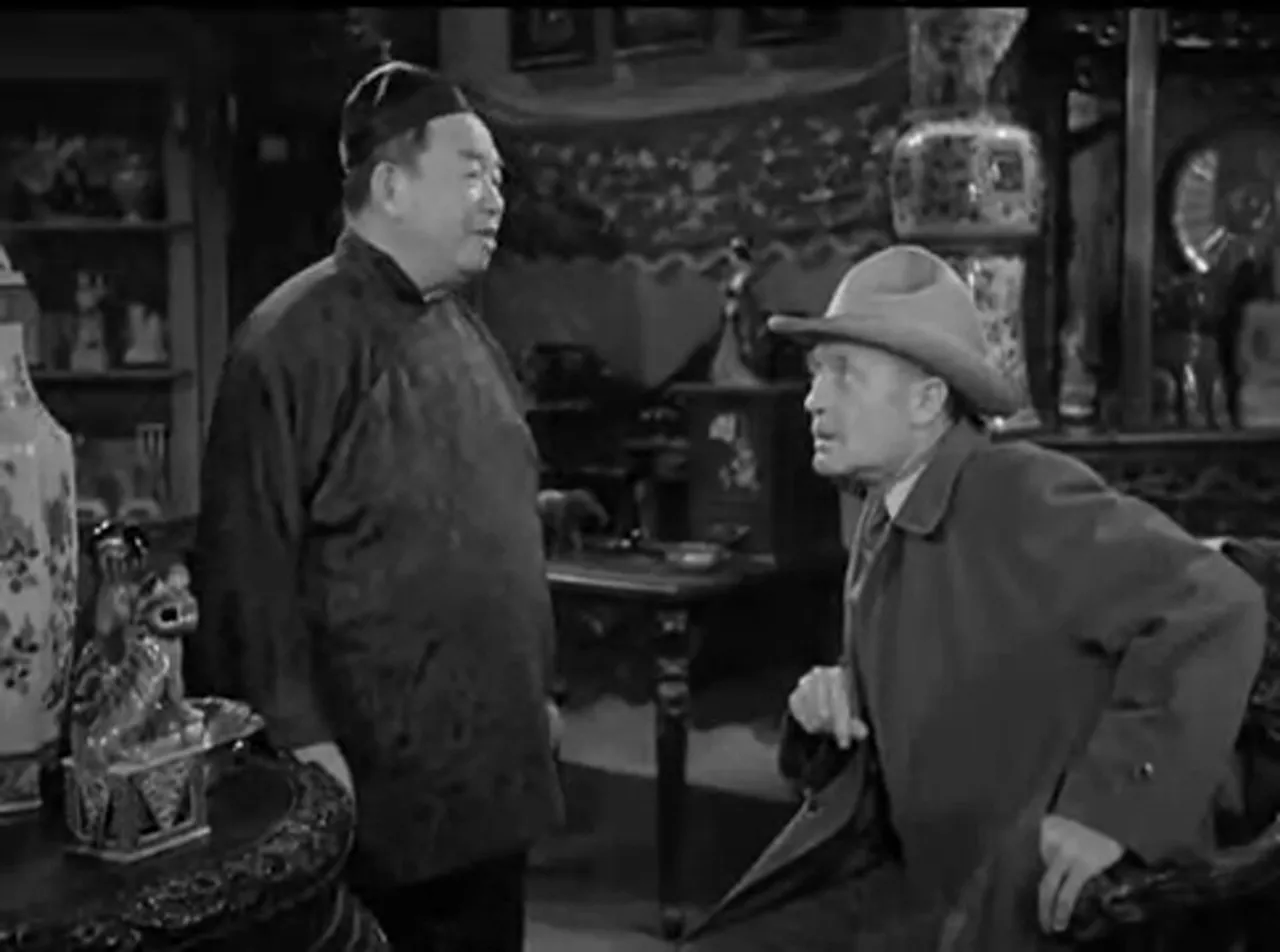
2. The Dude Ranch Disguise and Social Cover (Timestamp 05:23)
Chan’s choice to register at the dude ranch embodies the strategic wisdom of the series detective: anonymity through assimilation. The ranch scenes juxtapose rustic panorama with the subterranean danger of the mine—an effective contrast that intensifies suspense while allowing for comic counterpoint from Tommy and Birmingham.
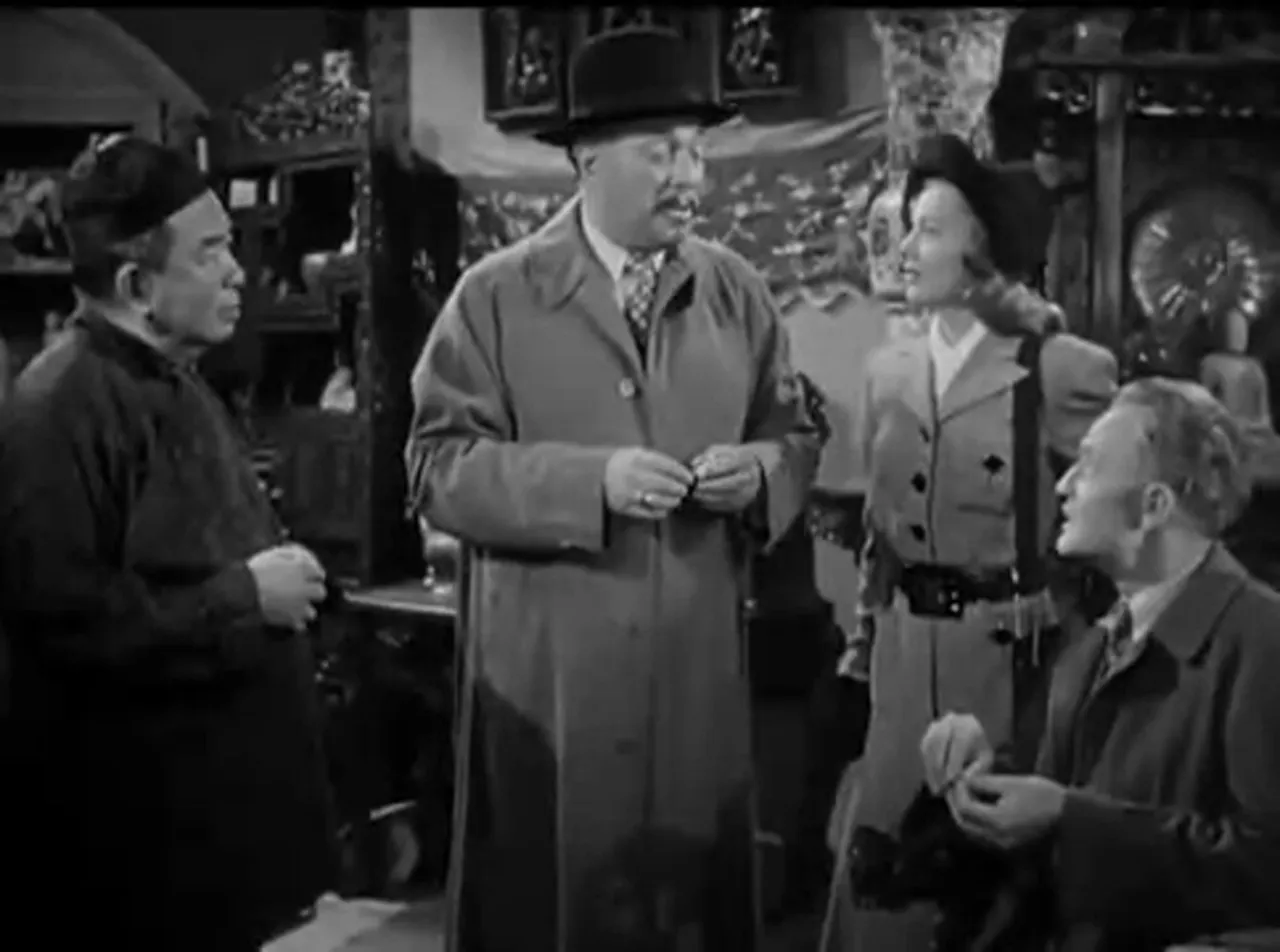
3. Undercover Lieutenant and the Barroom (Timestamp 09:29)
Lt. Mike Ruark’s drunken guise reveals the film’s fascination with theatricality in policing. The undercover motif—long used in detective literature—operates here as a moral and rhetorical inversion: the liquor‑soaked persona covers a disciplined investigator, and the line between pretense and authenticity is a source of narrative irony.
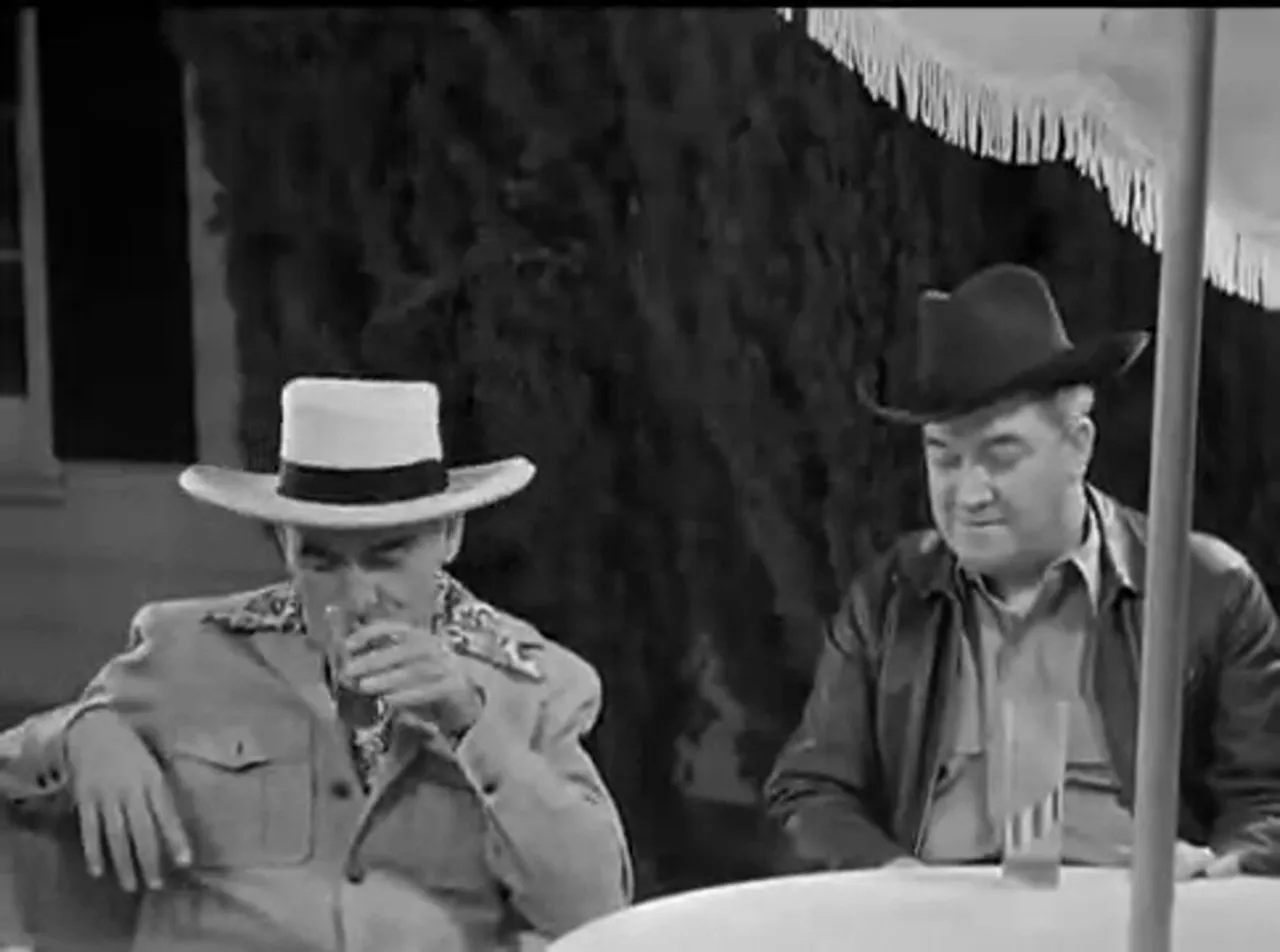
4. The Manning Sickroom and Medical Imposture (Timestamp 20:24)
The Manning sickroom is an interiored locus for suspicion. Sister Theresa’s ambiguous behavior and the strategic use of opiates factor into the film’s questions about medical authority and staged appearances. The mise‑en‑scène underscores a domestic space used to conceal rather than heal.
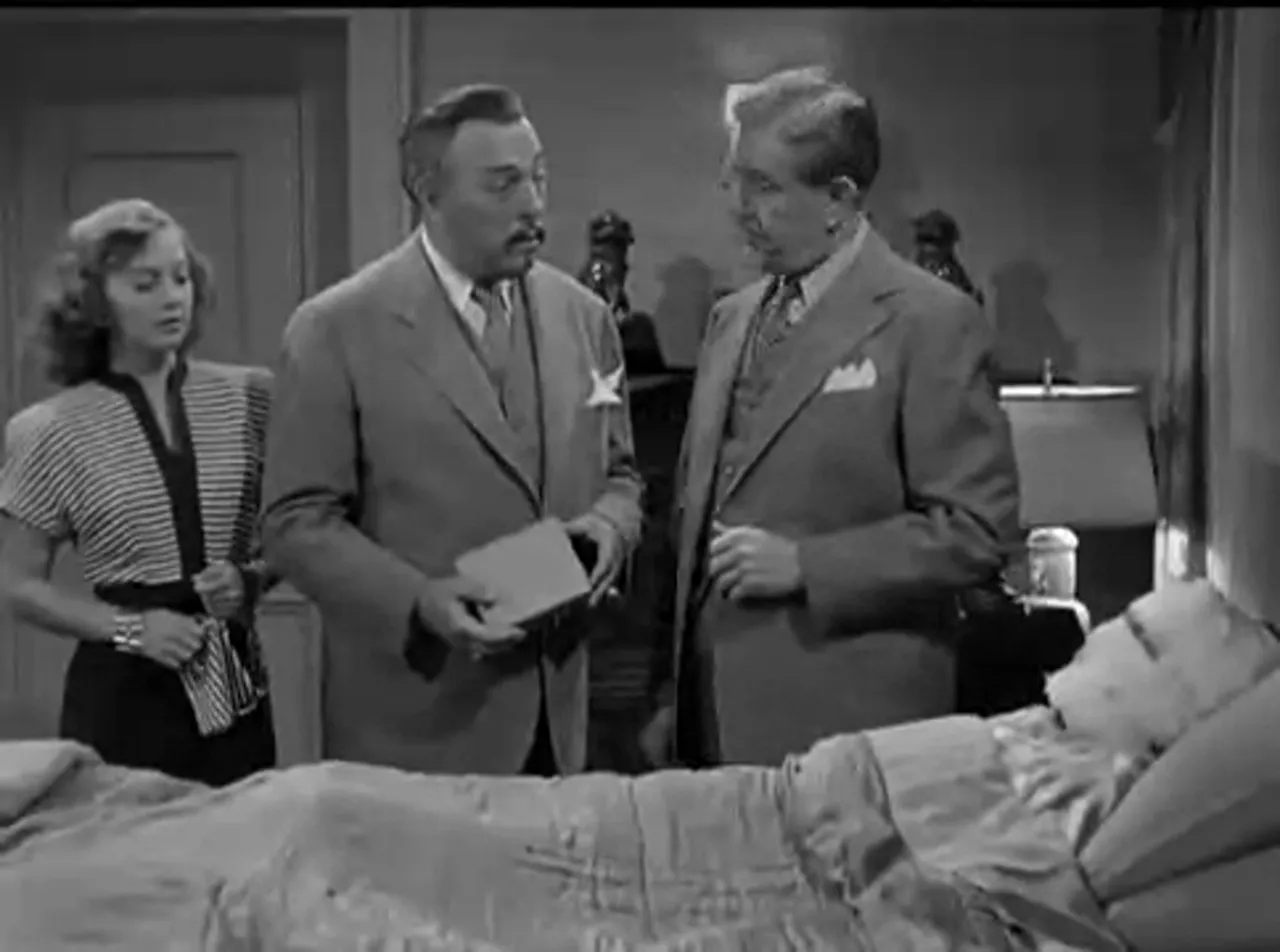
5. The Secret Passage and Dead Prospector (Timestamp 34:08)
This is the film’s narrative fulcrum. The discovery of Pete’s body beneath the mine establishes the stakes of physical danger and suggests that murder is being staged to mislead investigators. The subterranean environment functions as both literal and symbolic depth—an underworld where official records and moral accounting are falsified.
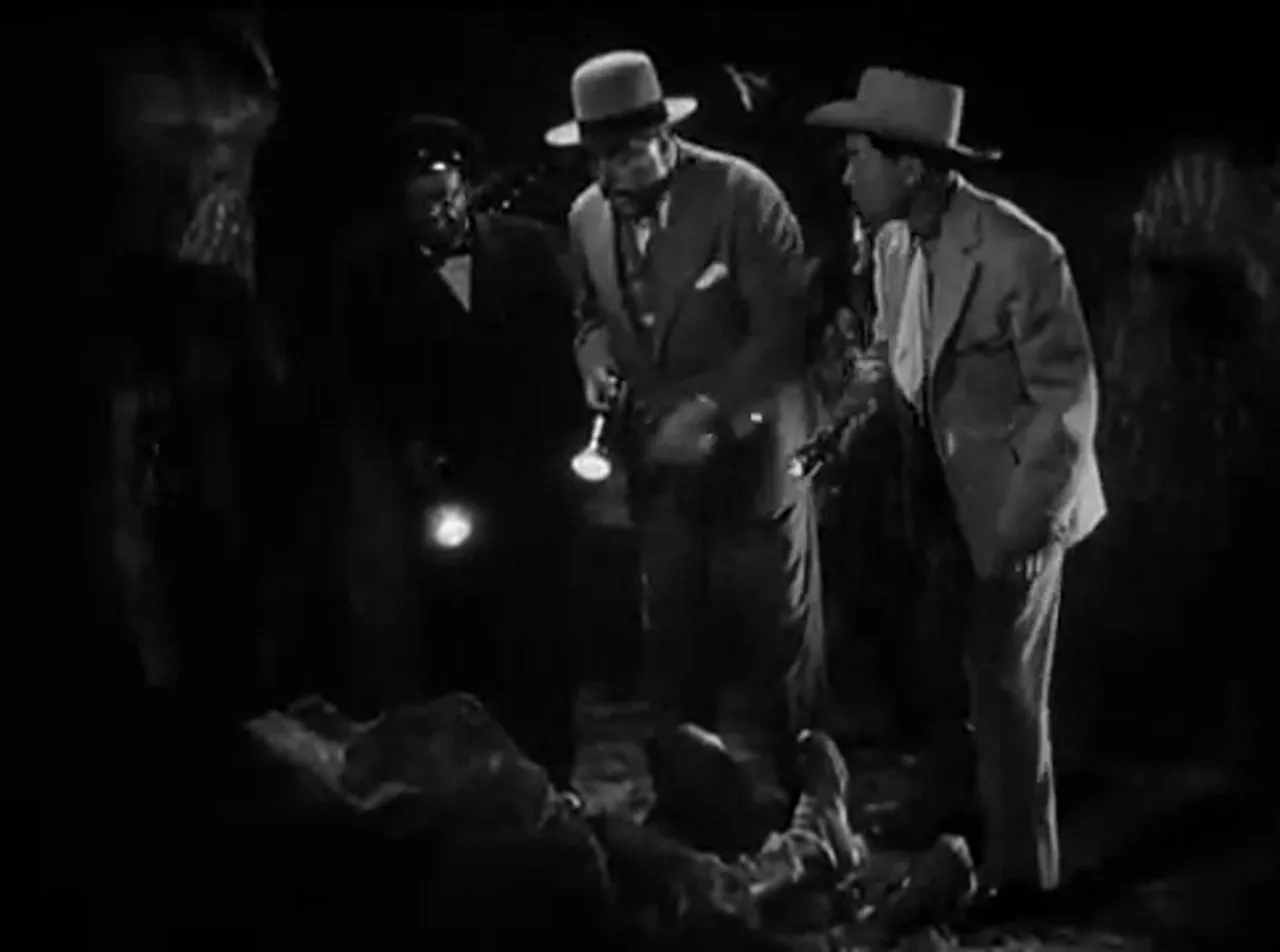
6. The Tunnel Chase and Near Escape (Timestamp 59:19)
An extended sequence of near‑capture and frantic retreat produces real jeopardy. Chan and his companions narrowly escape following a perilous series of underground maneuvers. The frenetic energy of the chase affords the film some of its most suspenseful moments, and the editing and staging of direction keep the action taut within the film’s constraints.
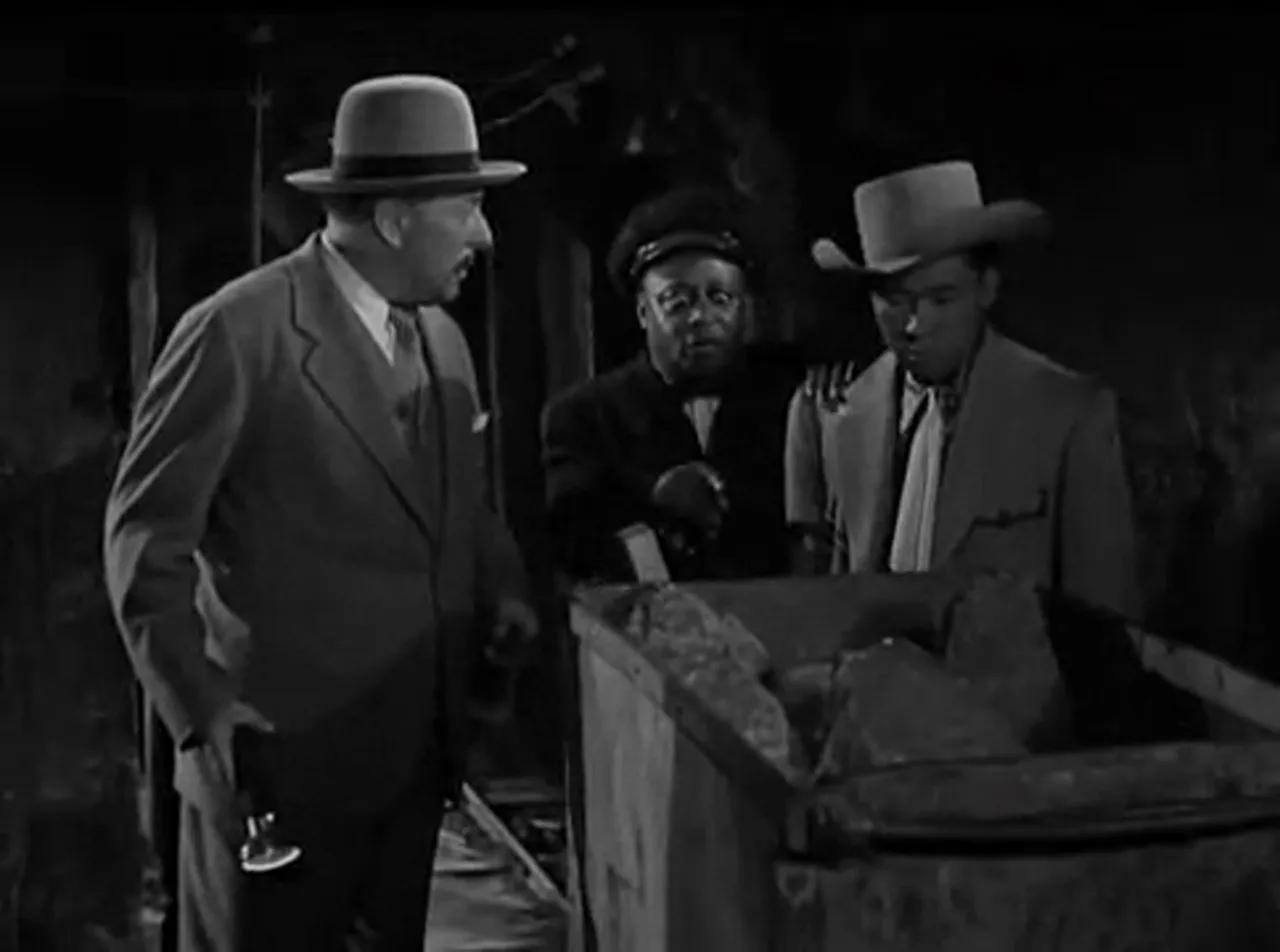
7. The Reveal and Cross‑Border Clues (Timestamp 1:06:49)
The film resolves with coordinated law enforcement work and cross‑border cooperation. Captain Gonzales and the Mexican border patrol trace shipments and intercept the smuggling route. These final linkages reveal the systemic nature of the crime and bring the film to a denouement that stresses intergovernmental collaboration rather than the lone triumph of a private detective.
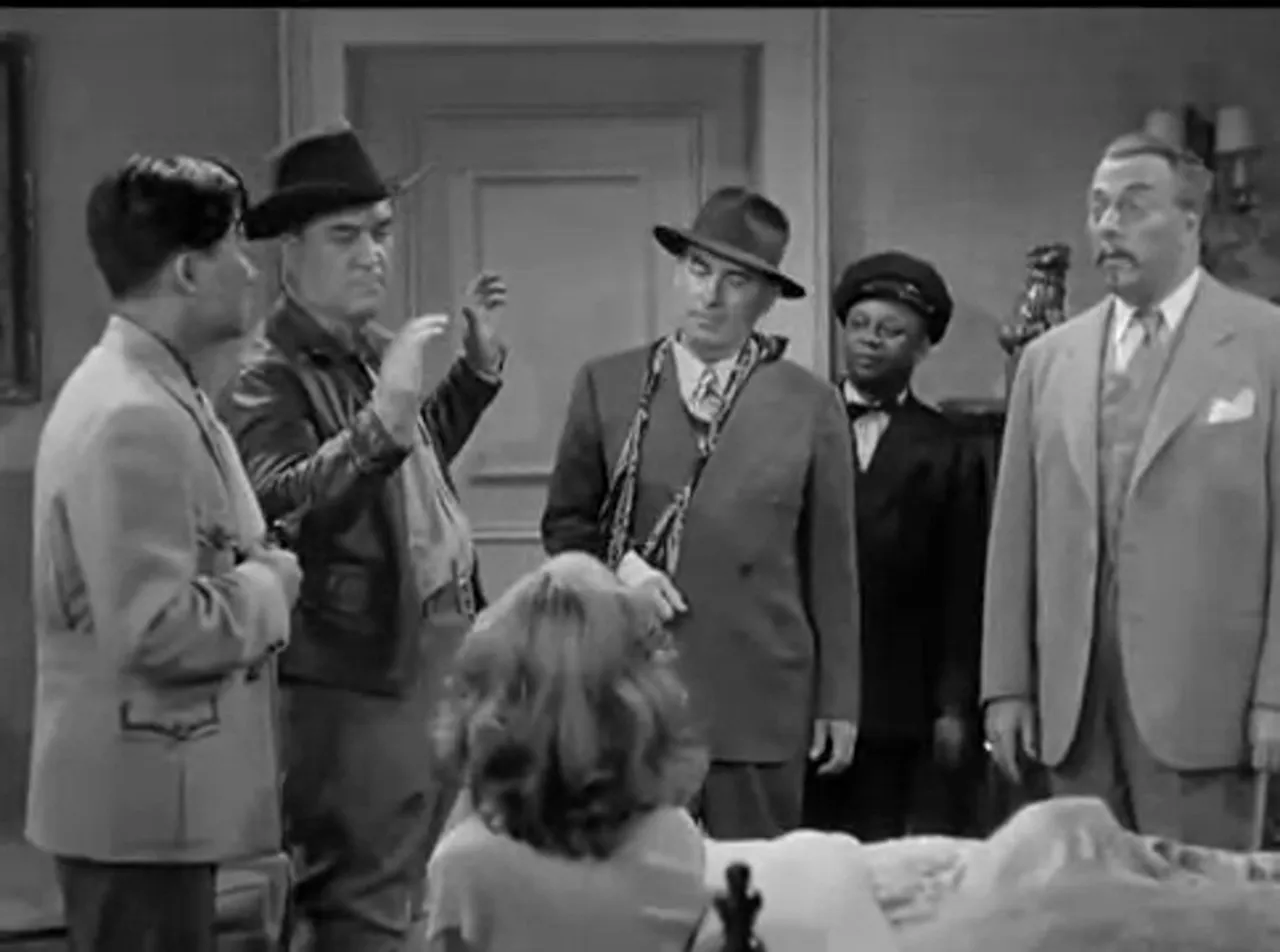
How The Golden Eye Fits in the Charlie Chan Cycle and 1940s Studio Practice
The Golden Eye arrives late in a long series of Charlie Chan films that began as literary adaptations and then became one of Hollywood’s longest‑running detective series. By 1948 the cinematic Charlie Chan had been embodied by multiple actors; Roland Winters was one of several actors who sustained the role across studio transitions. The film reflects the serialized economy of franchise filmmaking: short runtime, quick resolution, and reliance on recognizable character dynamics.
Monogram Pictures leveraged established property—Charlie Chan—to produce content that could be cheaply and reliably manufactured for audiences. The studio’s method emphasized efficiency: utilitarian studio sets, stock character types, and proven plot beats. These constraints did not prohibit moments of formal interest; rather, they produced a particular kind of craftsmanship in which economy and narrative clarity were prioritized. The Golden Eye is therefore instructive for students of studio practice: it demonstrates how a modest production could nonetheless stage suspense, deploy genre hybrids, and engage with topical criminal concerns such as smuggling across the U.S.–Mexico border.
From a franchise perspective, the film continues Charlie Chan’s familiar epistemic stance: an older, seemingly indulgent figure whose aphorisms and calm demeanor hide superior deductive acuity. The formula—client cry for help, masked danger, subterranean forays, and final reveal—remains intact. But The Golden Eye adds a border crimes element that reflects late‑1940s anxieties about black‑market flows and postwar commodity pressures. That topical edge is what gives the film some of its noir adjacency: the crime is less about passion and more about transnational profit, which in turn destabilizes local social relationships.
Strengths, Weaknesses, and Critical Appraisal
The Golden Eye’s strengths are several and pragmatic. First, the film is narratively efficient. In under seventy minutes it establishes motive, complicates it with misdirection, stages real jeopardy, and produces an intelligible solution. For viewers who appreciate compact storytelling, this structural economy is an asset. Second, Roland Winters anchors the film with his assured presence, and the interplay of Tommy and Birmingham supplies pacing variety. Third, the mine setting offers a distinctive environment for the detective story: the subterranean labyrinth amplifies tension and enriches the film’s visual palette.
Yet the film’s limitations are also notable. Monogram’s budgetary limits show in production values: the film cannot achieve the shadowed image textures or ambitious camerawork associated with classic film noir movies. The comedic interludes—anchored by Birmingham Brown—sometimes undermine suspense, softening moments that could have been ruthlessly tense. The characterization of Helen or Evelyn Manning, like many female figures in series mysteries, functions primarily as a narrative catalyst; she is less a fully realized subject than a plot necessity. Finally, the film’s resolution—while logically cohesive—relies on conventional arrests and confessions rather than an existential critique of social systems. The Golden Eye closes tidy, in keeping with studio franchise expectations.
From the perspective of a critic interested in the broader noir matrix, The Golden Eye is valuable for how it borrows noir motifs—moral ambiguity, disguised identities, and smuggling networks—without becoming a film noir movie in full measure. That hybrid status is a point of interest, not derision: it represents how genre circulation across studios produced films that were neither pure detective serials nor uncompromised noir films, but productive hybrids with their own pleasures.
Notable Lines, Aphorisms, and Scripted Economy
Charlie Chan’s aphoristic speech patterns punctuate key moments. While the film prioritizes clarity over poeticism, Chan’s observations serve as intellectual signposts that guide the audience. Equally, Lt. Mike’s undercover antics add a layer of comic inversion; his staged drunkenness contrasts with Chan’s calm accumulation of facts. The economy of dialogue is a feature typical of Monogram scripts: lines are functional, often doubled as character markers, and rarely indulgent. This brevity helps the film sustain narrative momentum.
“Small things sometimes tell very large stories.”
This line—representative of Chan’s metodic reasoning—captures the intellectual kernel of the film. The detective’s attention to the incidental (a fingerprint, a piece of ore, a nursing sister’s odd behavior) contrasts with the gang’s emphasis on large‑scale smuggling. The dialectic between small detail and systemic crime is central to the film’s methodology.
Legacy, Public Domain Status, and Contemporary Viewing
The Golden Eye is now in the public domain due to omission of a valid copyright notice on original prints, which has shaped its modern circulation and availability. Public domain status means the film appears in numerous home video collections and online platforms, often with variable image quality. That accessibility is a double‑edged sword: scholars and enthusiasts can readily view the film, yet preservation efforts and high‑quality restorations are less consistently funded than for studio primed properties with active rights holders.
For contemporary viewers, the film offers historical interest rather than revolutionary artistry. It provides a compact lesson in mid‑century American genre practice: the blend of detective conventions with topical crime plots; the interplay of comedy and suspense; and the continuing cultural resonance of a detective figure who solves puzzles through observation and wit. For those compiling a program on detective cinema or the evolving echoes of noir in popular series, The Golden Eye provides a useful case study.
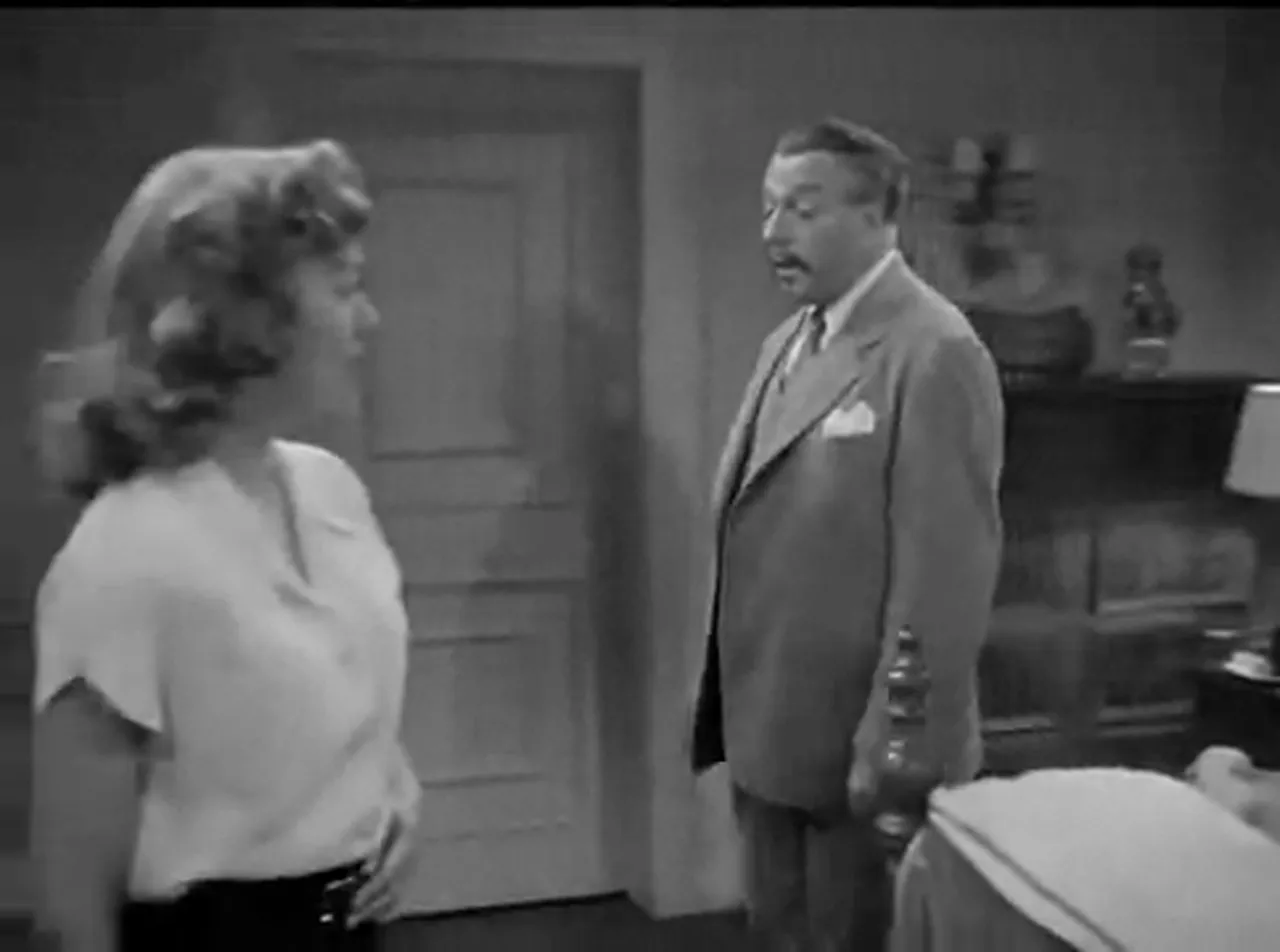
Conclusion: Who Should Watch The Golden Eye?
The Golden Eye has clear appeal for a number of audiences. Scholars of serial detective cinema, collectors of Monogram pictures, and enthusiasts of mid‑century crime narratives will find it rewarding. Those seeking the full stylistic power of a canonical film noir movie will not find it here; instead, they will discover an economical detective narrative that borrows noir motifs and integrates them into a franchise model. The film’s public domain status makes it easily accessible for classroom viewing and comparative study.
Viewed generously, The Golden Eye offers a compact illustration of how genre elements cross‑pollinated in production contexts outside the studio majors. It demonstrates that noir’s thematic concerns—deception, smuggling, and compromised authority—were not exclusive to high‑contrast cinematography or existential malaise but could be adapted into a series detective’s clinical method. For a viewer curious about film history, the film serves as a practical, watchable artifact: not the definitive film noir movie, but an instructive piece of the larger mosaic of American crime cinema.
Recommendations for Further Study
For those who want to situate The Golden Eye in a broader context, recommended lines of inquiry include:
- Comparative viewing of earlier and later Charlie Chan films to track tonal and stylistic shifts within the series.
- Examination of Monogram Pictures’ production model and its impact on narrative economy and genre hybridity.
- Comparative analysis with canonical film noir movies that emphasize urban low‑life and visual style, to clarify points of convergence and divergence.
- Historical research into postwar smuggling narratives in U.S. cinema and how they reflect currency and commodity anxieties.
When placed alongside more visually ambitious critics’ picks, The Golden Eye is not a classic film noir movie in the strictest sense. Yet it remains a worthy subject of critical attention precisely because it demonstrates how noir themes infiltrated popular detective series and how studios like Monogram repurposed these elements for durable, economical entertainment.
Credits and Sources
This appraisal is grounded in the film’s credited production information: William Beaudine (director), Roland Winters (Charlie Chan), Scott Darling (screenplay contribution), William A. Sickner (cinematography), Edward J. Kay (music), and Monogram Pictures (production and distribution). The film’s release date and running time are part of public filmographic records; the narrative elements discussed here derive from the film’s scripted material and the film’s plot as it unfolds. Given The Golden Eye’s public domain circulation, it is recommended to consult archival prints for preservation‑grade viewing whenever possible.
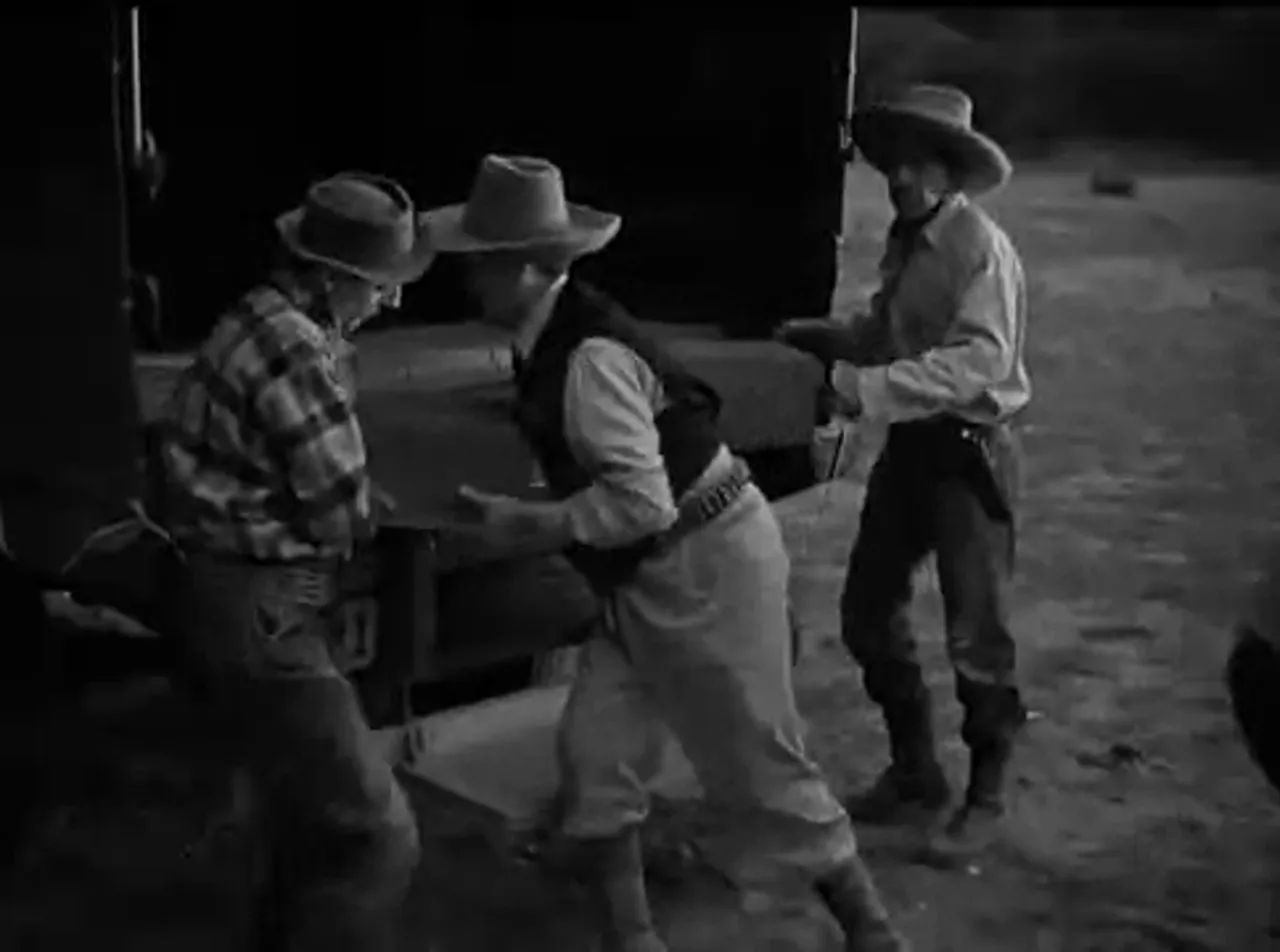
Final Note
For viewers and researchers who approach The Golden Eye expecting a canonical film noir movie, the film offers instead a hybrid experience: a detective series picture with noir adjacency. It rewards attention to detail, appreciation for concise genre storytelling, and interest in how studios translated social anxieties into modestly scaled cinematic plots. Ultimately, The Golden Eye remains valuable as a compact, revealing piece of late‑1940s cinematic practice—one that invites fresh viewings and scholarly reconsideration.
